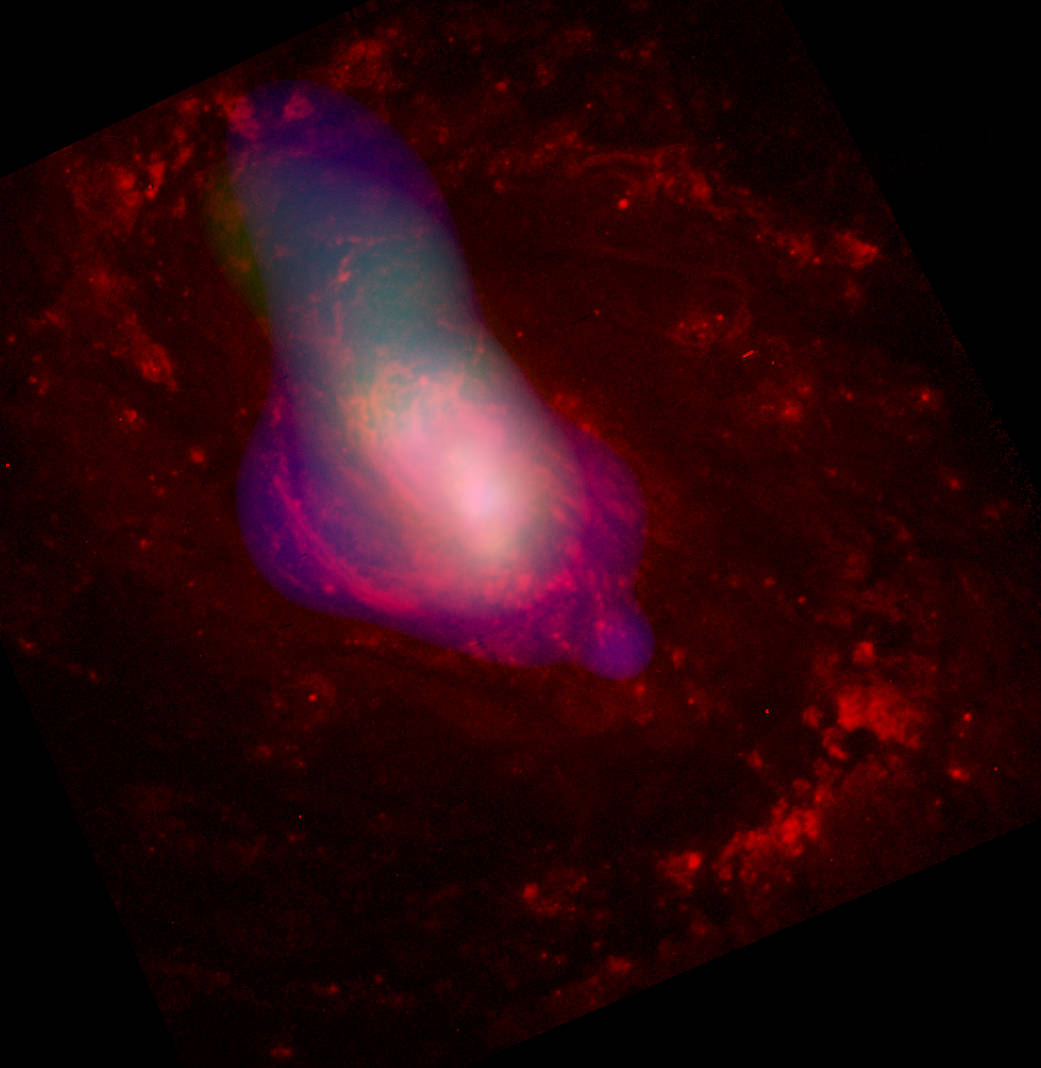This 2003 composite X-ray (blue and green) and optical (red) image of the active galaxy, NGC 1068, shows gas blowing away in a high-speed wind from the vicinity of a central supermassive black hole. Regions of intense star formation in the inner spiral arms of the galaxy are highlighted by both optical and X-ray emission.
The elongated shape of the gas cloud is thought to be due to the funneling effect of a torus, or doughnut-shaped cloud, of cool gas and dust that surrounds the black hole. The torus, which appears as the elongated white spot in the accompanying 3-color X-ray images, has a mass of about 5 million Suns. Radio observations indicate that the torus extends from within a few light years of the black hole out to about 300 light years.
The X-rays observed from the torus are scattered and reflected X-rays that are probably coming from a hidden disk of hot gas formed as matter swirls very near the black hole. The torus is one source of the gas in the high-speed wind, but the hidden disk may also be involved. X-ray heating of gas further out in the galaxy contributes to the slower, outer parts of the wind.
#TBT
Image Credit: X-ray: NASA/CXC/MIT/UCSB/P.Ogle et al.; Optical: NASA/STScI/A.Capetti et al.





























